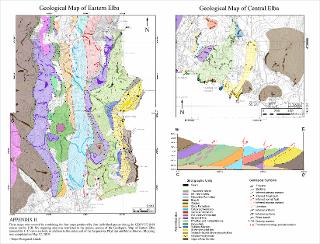| dc.description.abstract | The Oligocene Acquadolce Phyllites and Metasiltstones (APM) of eastern Elba, Italy are high- pressure (HP) rocks related to the Apennine subduction zone. The unit gained newfound attention after the findings of high-pressure minerals (glaucophane and lawsonite), as it was long thought to be greenschist-facies rocks. Parts of the sediments making up these rocks, including detrital zircons, originate from the volcanic arc related to the central Alps. The sediments were deposited in the Apenninic foredeep, subducted shortly after and then rapidly exhumed. In this study, a suggestion for the complex tectonic history of these rocks is made by interpreting the various structures found throughout the unit, as well as providing the first low- temperature thermochronological data using the (U-Th)/He method on zircons (ZHe) in an attempt to constrain the timing of exhumation. The structures found in this study are similar to the ones reported in previous studies (open-isoclinal folds at the micro-meso scale, sheath folds, shear bands, faults, etc.) and show a correlation to other HP units found on mainland Italy such as in the Apuan Alps. Based on these structures, a series of deformational events are described relating to subduction, early exhumation, late exhumation, and post-exhumation. We suggest that the exhumation, always aided by slab retreat, was first driven by buoyancy through an extruding wedge accommodated by compressional and extensional shearing, followed by extension in the orogenic wedge due to gravitational instabilities. The extension was followed by renewed compression reflected by a previously undescribed km-scale antiform in the southern part of the APM. The timing of the exhumation in the region has been constrained to Early-Late Miocene by analysis of other units. The ZHe ages yielded 5.9-6.2 Ma and represents cooling through zircon’s closure temperature of ca. 180 oC. This is coeval to the Late-Miocene magmatism that affected Elba, suggesting that the geochronological systems were reset and that the ages represent cooling from the contact metamorphism rather than cooling by exhumation. Magmatism and post-orogenic collapse were results of a rising asthenosphere caused by the eastward migration of the compressional front due to slab retreat and can be seen in the APM by high-angle normal faults. | |

